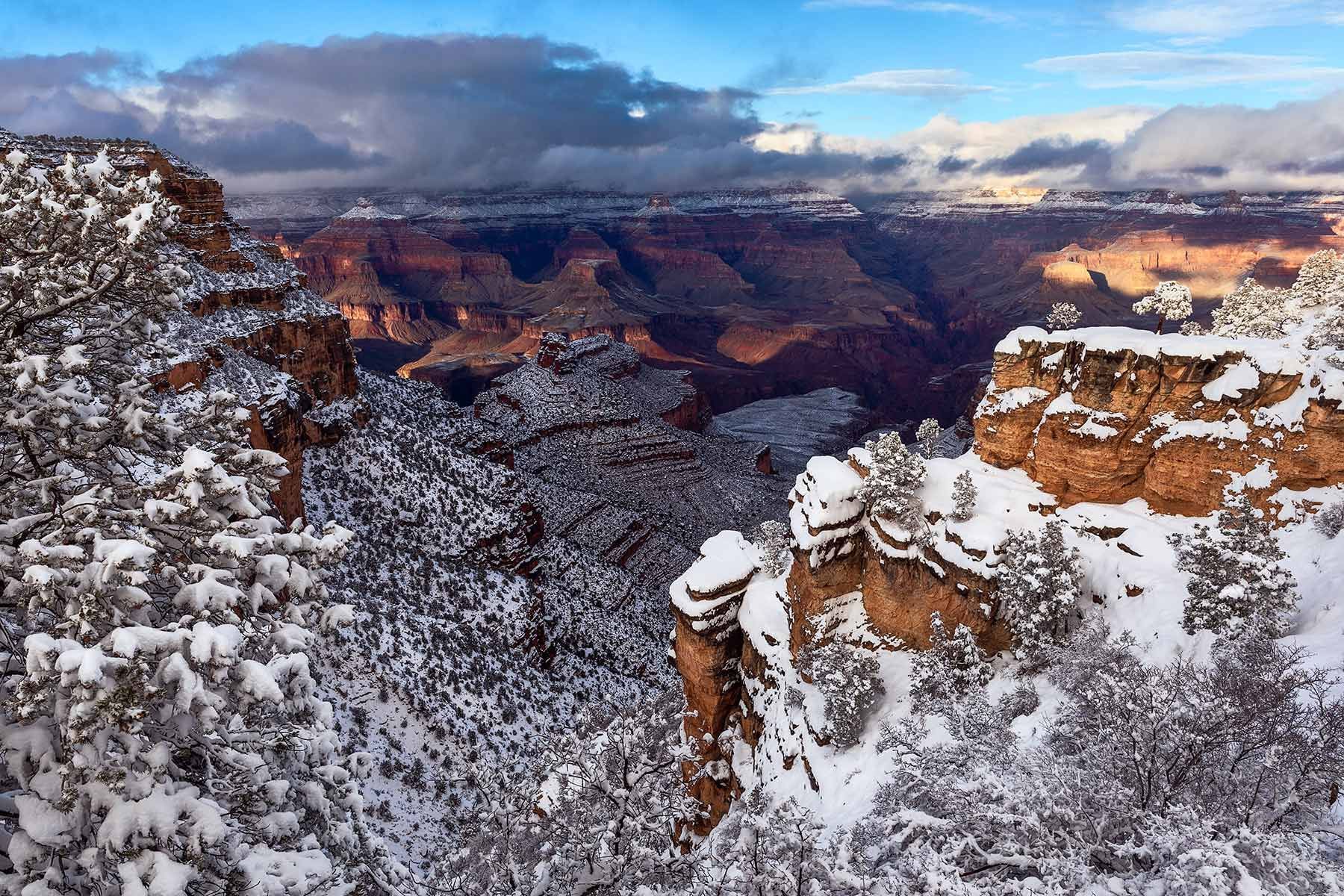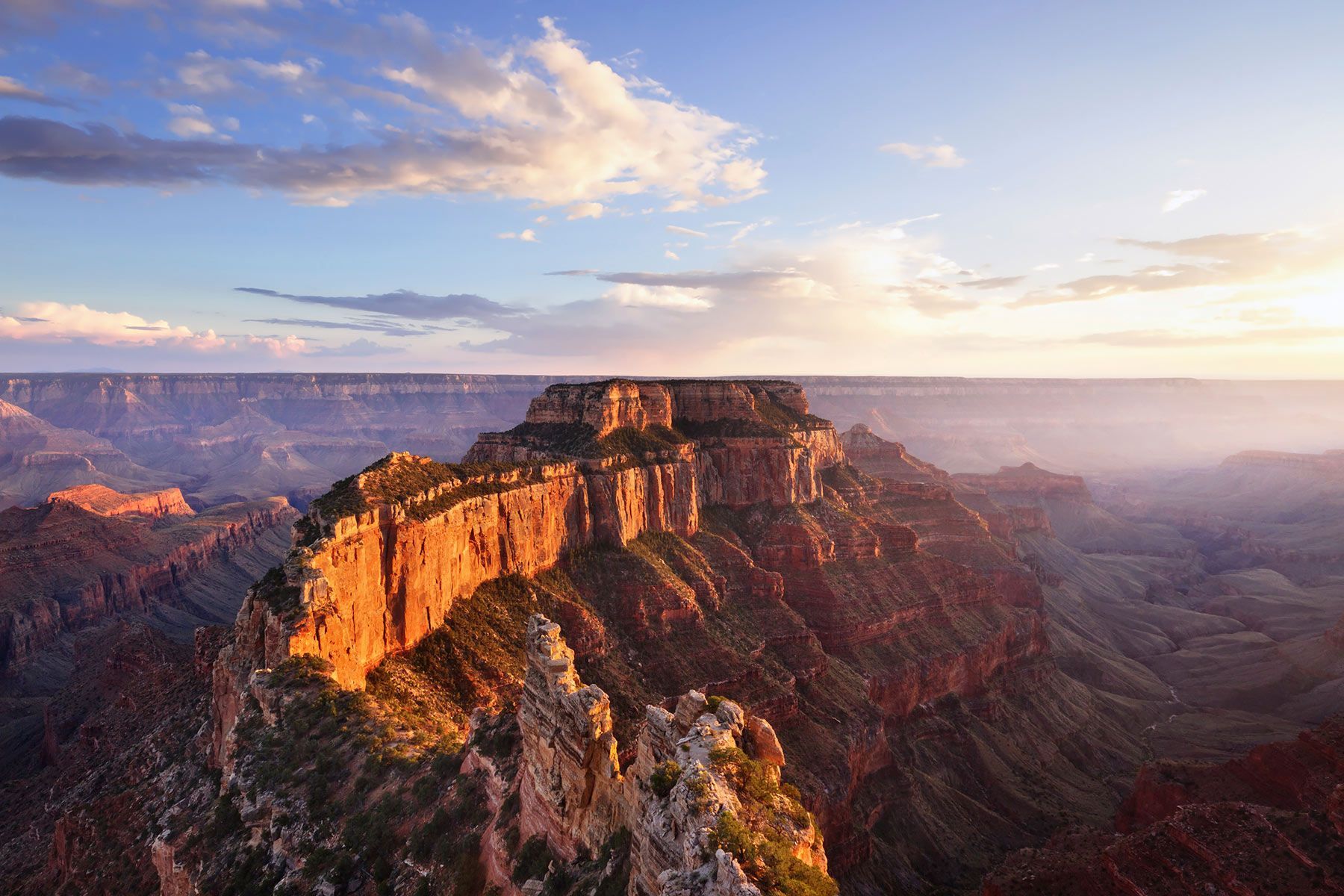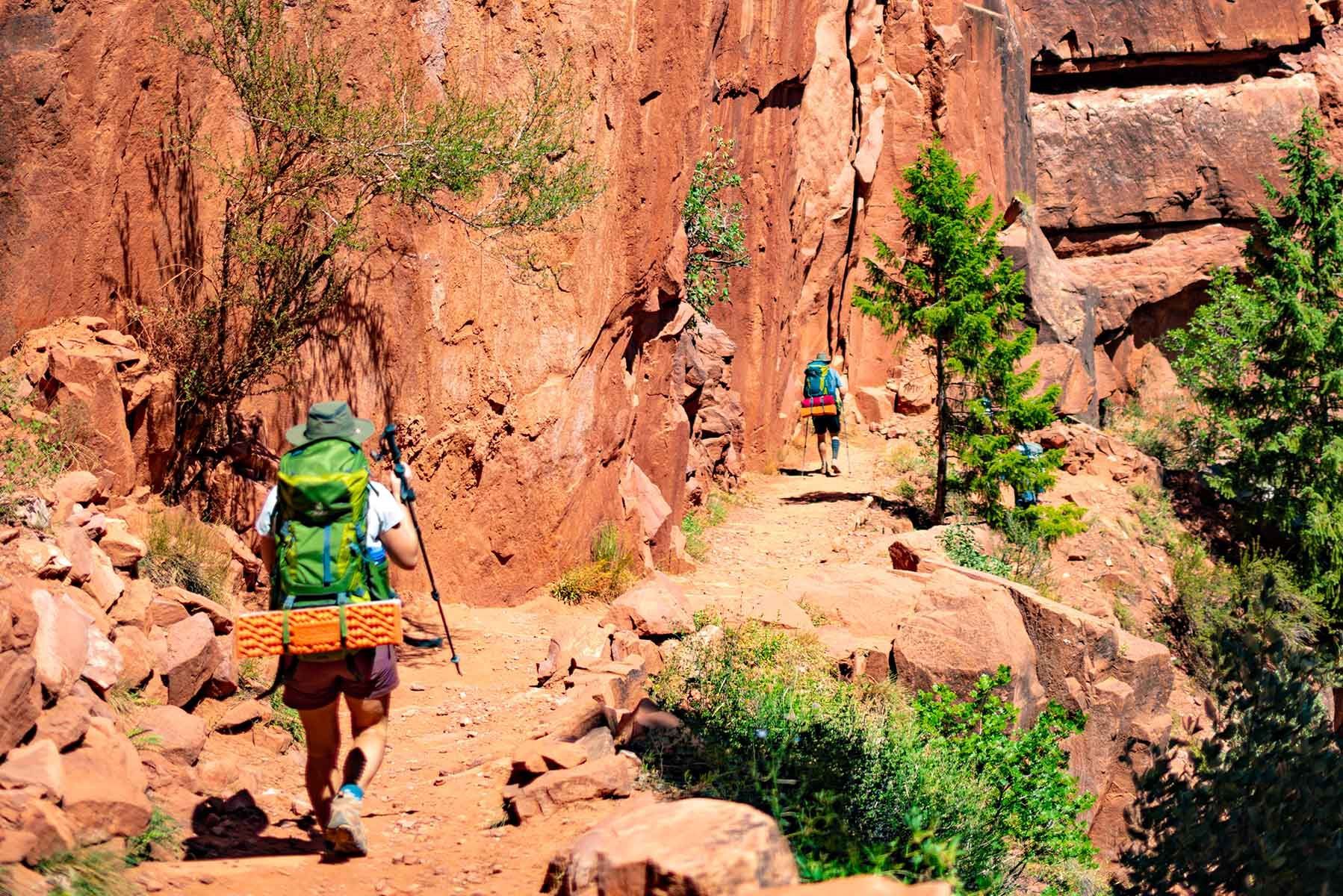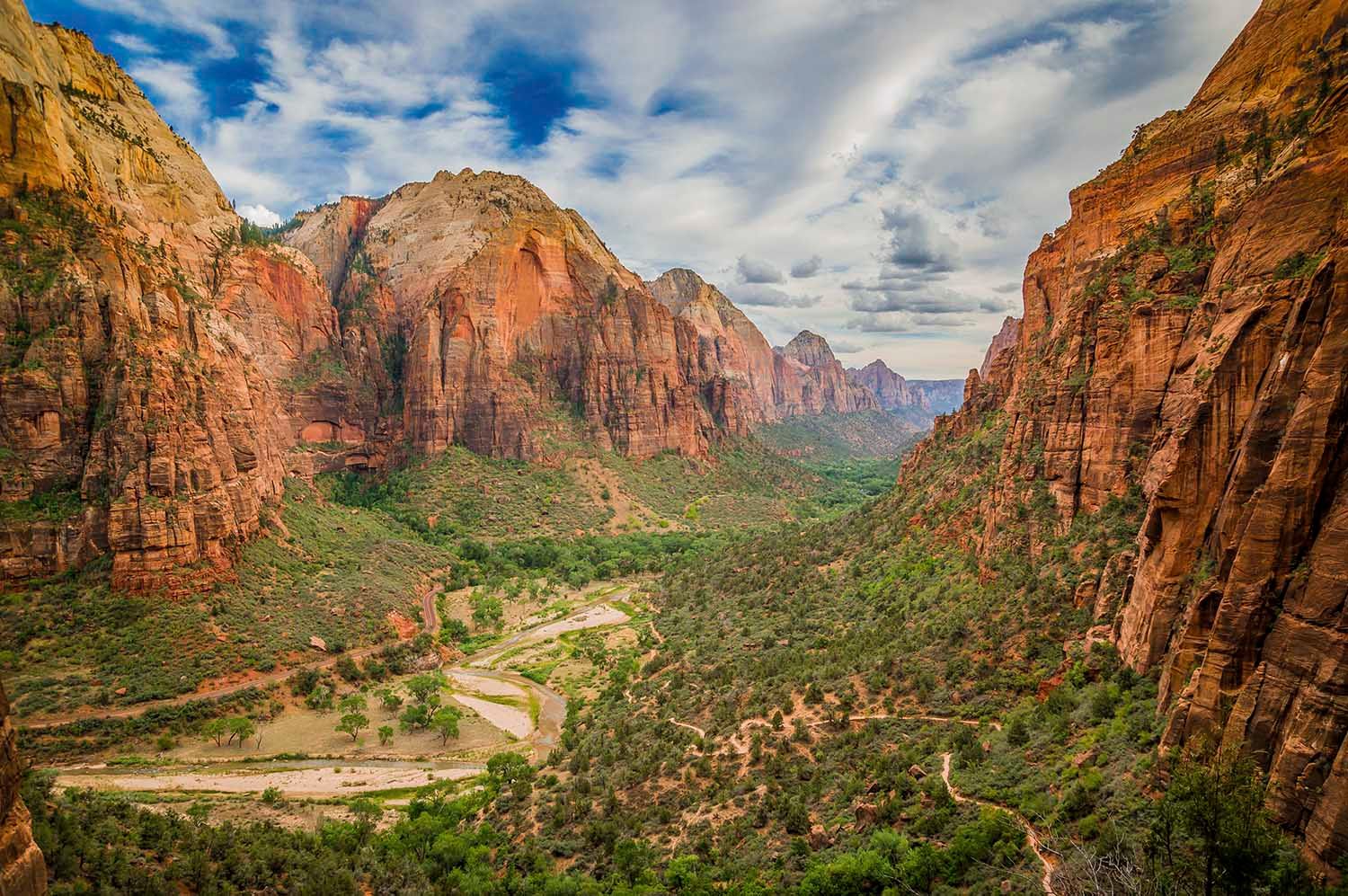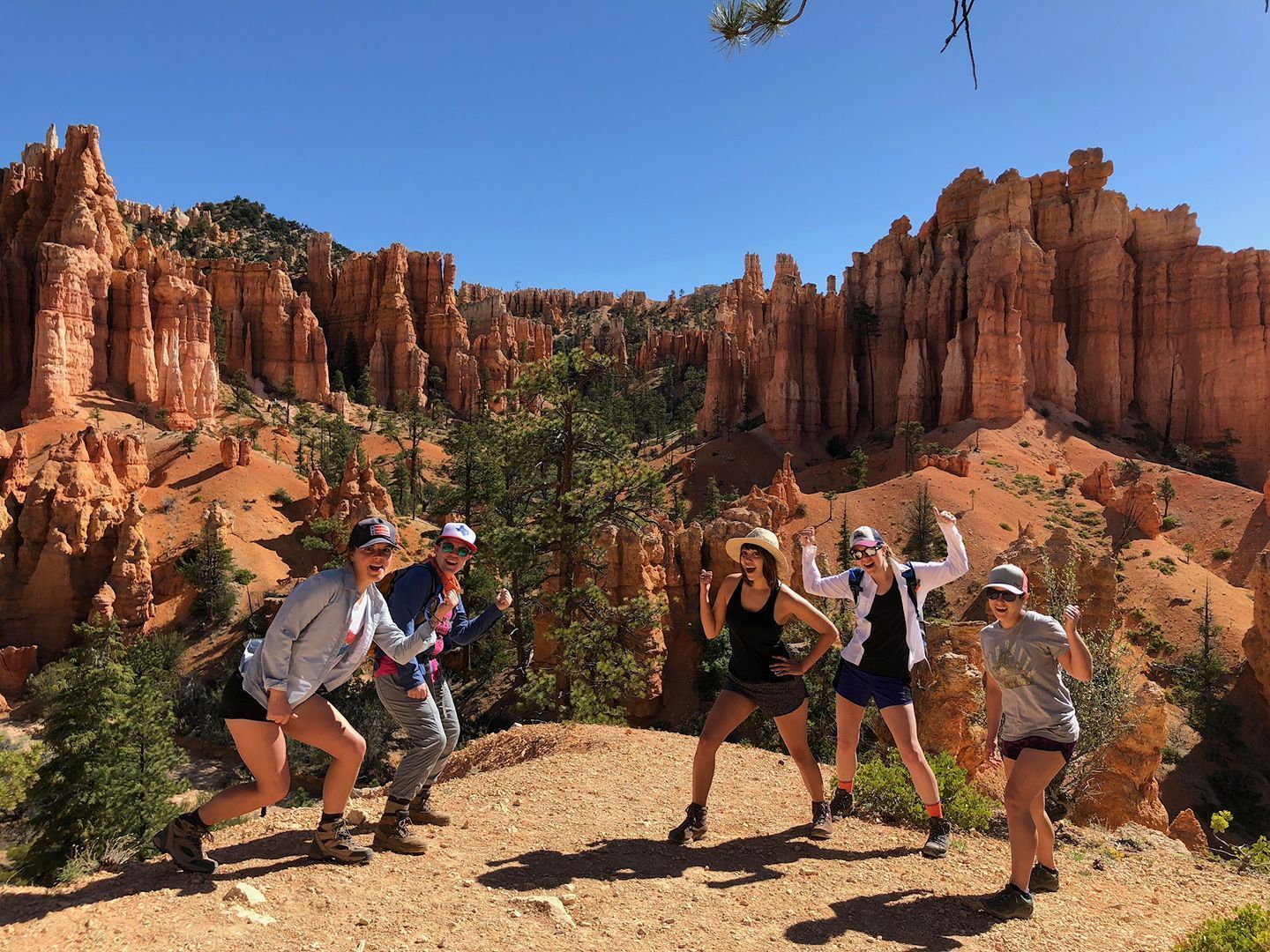Hiking the Grand Canyon
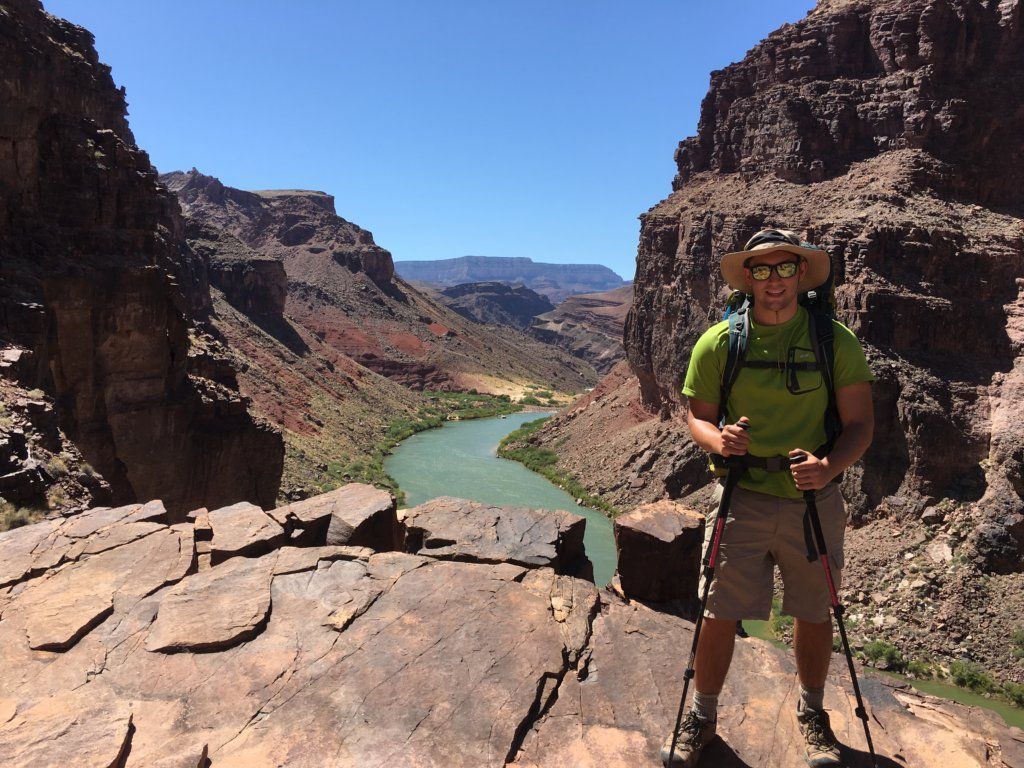
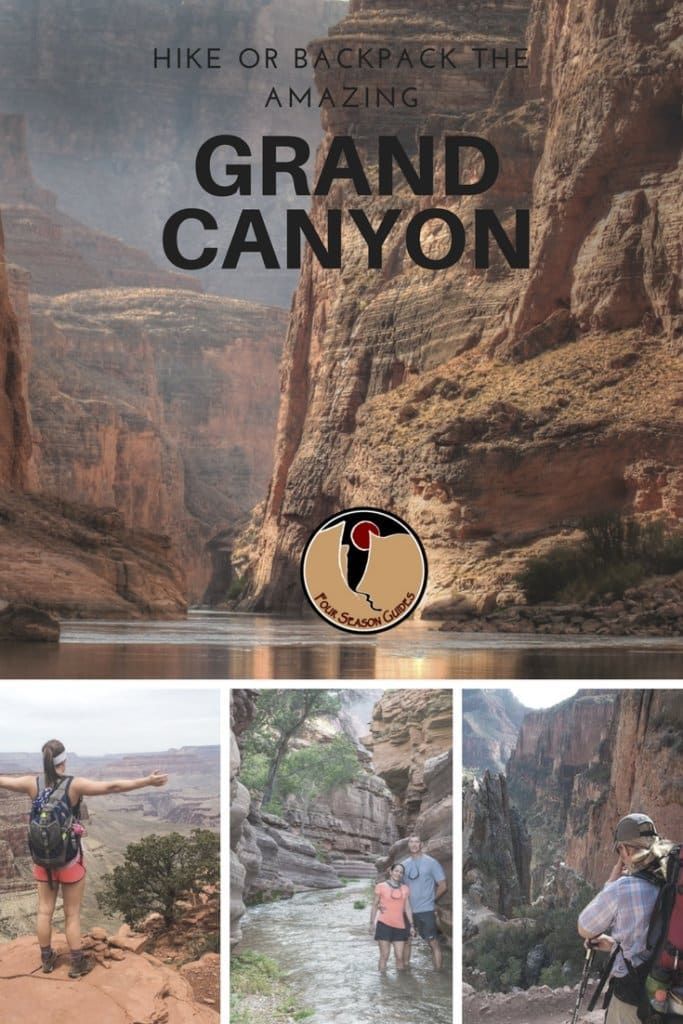
Key Takeaways
- The Grand Canyon offers hikes for every skill level, from easy Rim Trail walks with sweeping views to multi-day backcountry adventures reaching the Colorado River.
- Rim Trail hikes are ideal for beginners, featuring paved paths, historic landmarks, and ever-changing vistas—plus a convenient shuttle for return transport.
- Day hikes like the Bright Angel, South Kaibab, and Hermit Trails let visitors explore below the rim, offering rich history, wildlife sightings, and rewarding mid-canyon destinations.
- Backcountry trips challenge even seasoned hikers, demanding endurance for nearly 5,000 feet of elevation gain but delivering unmatched sunrise and sunset views deep within the canyon.
- Guided Grand Canyon tours, including backpacking and lodge-based trips to Phantom Ranch, ensure safety, proper pacing, and a more immersive experience of this world-renowned natural wonder.
If there is one thing the Grand Canyon can be counted on to provide – it is inspiration. Visitors arriving for their first glimpse at one of the true wonders of the natural world will want to walk as far along the South Rim as time and energy permits – the entire Rim Trail runs for 13 miles.
For an overview of the area’s best trails and viewpoints, see our guide to the Grand Canyon South Rim. Others will be inspired to hike below the rim and for them, there are a few trails suitable for day hikes into the 277-mile long gash in the earth’s crust.
Still, others will aim for the ultimate hiking adventure – descend one vertical mile to the Colorado River and climb back up the other side. Let’s take a look at each of these Grand Canyon hiking options.
Along the Rim
You do not need to tackle steep trails to be overwhelmed by the majesty of the Grand Canyon. Hiking trips on the Rim Trail travel on paved and graded dirt paths that are ideal for any level of outdoor enthusiast. As the trail twists along the canyon edge, the views are constantly shifting and the angles of light hitting the canyon provide fresh Kodak moments at every turn.
Along the Rim Trail, the Colorado River shows itself way down below, and hikers are treated to up-close views of historic canyon buildings dating back nearly to the national park’s beginnings almost 100 years ago. Best of all…after a spirited hike along the Grand Canyon South Rim there is a shuttle bus to catch back to the starting point.
Day Hikes
There are three trails best suited for day hikes that drop from the South Rim into the canyon, with the Bright Angel and South Kaibab Trail being the best known and most-traveled.
Picking its way down the canyon from the most western access point is our favorite – the Hermit Trail. Constructed by the Santa Fe Railroad over a century ago, this historic trail, where some of its original cobblestone construction is still intact, is populated by many more pinon pines and junipers than people.
The destination is either Santa Maria Spring at 2.5 miles or Dripping Springs at 3.5 miles. The Hermit Trail serves up its share of steep climbs on its way, one-third down the Grand Canyon, but also offers level stretches of trail as well. You can learn more about this classic route on our guided
Hermit Trail day hike. Bighorn sheep, deer, Stellar Jays, and maybe even a seldom-seen California condor may be part of this memorable day hike.
Backcountry
Hiking in the Grand Canyon backcountry is sure to test even the most experienced trail tramps’ physical and mental endurance. Reaching the bottom of the canyon will require a climb of nearly 5,000 feet to return to the rim, and there are not many hikes comparable to that sort of elevation gain.
Our guides are experts in setting a proper pace that will conquer the task safely and efficiently. They will also wisely outfit your hike for the temperature changes, sun and winds that visit the canyon interior.
Even though the distance covered on our most popular Grand Canyon backpacking tours is under 25 miles, a Four Season Guides’ backcountry excursion will spread across three or four days. This ensures a pace that is manageable for average hikers, so almost anyone can soak in the once-in-a-lifetime sunrises and sunsets experienced deep inside the Grand Canyon.
You can choose from a backpacking exploration or a lodge–based tour to the world-famous
Phantom Ranch – the only developed accommodations beneath the rim of the Grand Canyon. Supplies are still shuttled to the basecamp by mule at this location. The leisurely three-day schedule makes this trip suitable for intermediate hikers and offers plenty of options for your time on the floor of the world’s most magnificent canyon landscape.
Frequently Asked Questions
Explore the best ways to hike the Grand Canyon — from scenic rim walks to challenging backcountry treks that descend to the Colorado River.
How long is the Grand Canyon Rim Trail?
The Grand Canyon’s Rim Trail stretches about 13 miles along the South Rim. It’s mostly paved or well-graded, making it perfect for casual hikers who want incredible canyon views without steep climbs. You can walk sections of it and take the park’s shuttle bus back to your starting point.
What’s the best way to see the Grand Canyon without going below the rim?
Walking the Rim Trail is the best option for those who prefer flat terrain. It offers constantly changing views, photo opportunities, and easy access to shuttle stops. You’ll also pass historic buildings and get glimpses of the Colorado River below.
Which Grand Canyon trails are best for day hikes?
The most popular day hikes from the South Rim are the Bright Angel Trail, South Kaibab Trail, and Hermit Trail. Each offers stunning canyon scenery and varying levels of difficulty. The Hermit Trail, less crowded and historic, is a favorite for its solitude and natural beauty.
How difficult is hiking the Hermit Trail?
The Hermit Trail is moderately strenuous. It descends roughly one-third of the way into the canyon, with steep sections balanced by gentler stretches. Most hikers turn around at Santa Maria Spring (2.5 miles) or Dripping Springs (3.5 miles). It’s ideal for those seeking a quiet, historic trail.
What wildlife can hikers expect to see in the Grand Canyon?
Grand Canyon hikers may encounter bighorn sheep, mule deer, Steller’s jays, and occasionally the rare California condor. Wildlife is most active during early morning and evening hours, especially along quieter trails like the Hermit Trail.
How challenging is a hike to the bottom of the Grand Canyon?
Reaching the Colorado River and climbing back up is one of the toughest hikes in North America. The round trip involves about 5,000 feet of elevation change and extreme temperature shifts. It’s recommended only for well-prepared or guided hikers with proper gear and conditioning.
How long do Grand Canyon backcountry hikes take?
Most backcountry trips last three to four days, covering under 25 miles. This allows hikers to safely manage the elevation change while enjoying sunrises, sunsets, and the canyon’s vast beauty. Guided options help with pacing, logistics, and safety.
Can you stay overnight inside the Grand Canyon?
Yes. The Phantom Ranch is the only developed lodging below the rim. It’s reached by hiking or mule and offers rustic cabins near the Colorado River. For those preferring camping, backcountry permits are required for designated sites along the trails.
What should you pack for a Grand Canyon hike?
Pack layered clothing for temperature changes, sturdy boots, sun protection, plenty of water, electrolytes, snacks, and a map or GPS. If hiking below the rim, carry extra water and a headlamp. Guided trips provide proper gear for comfort and safety.
When is the best time of year to hike the Grand Canyon?
Spring (March–May) and fall (September–November) are ideal. Temperatures are moderate, trails are less crowded, and conditions are safer for longer hikes. Summer brings intense heat, especially below the rim, while winter can mean icy paths near the top.
Four Season Guides, 506 N Grant St suite o, Flagstaff, AZ 86004, United States
+19285251552
35.19653980, -111.62000560

